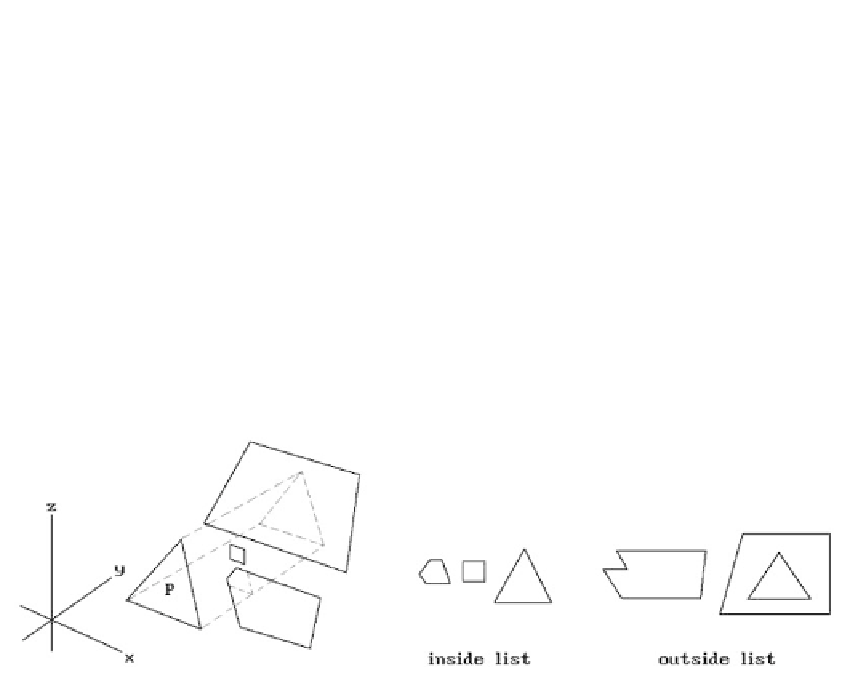Graphics Reference
In-Depth Information
Figure 7.6.
Examples of a face in front of another face.
Figure 7.7.
Weiler-Atherton type area subdivision.
P
. The resulting pieces are separated into two lists, those that lie inside
P
and those
that lie outside. This is more complicated to implement and the authors had to develop
a new clipping algorithm, which was discussed briefly in Section 3.3.2, but it is more
efficient.
Both the Warnock and Weiler-Atherton algorithms are not scan line oriented but
jump around as they draw the scene. Their complexity is approximately the com-
plexity of the final display (not of the scene).
7.7
Z-buffer Algorithms
Z-buffer algorithms record “current” depth information for each pixel. A “real” Z-
buffer is a two-dimensional array of real numbers of the
same
size as the frame buffer.
The real numbers record current depth information. A Z-buffer algorithm then scan
converts an entire face at a time into both the frame and the Z-buffer. The high-level
outline of such algorithms is extremely simple and is shown in Algorithm 7.7.1. There





